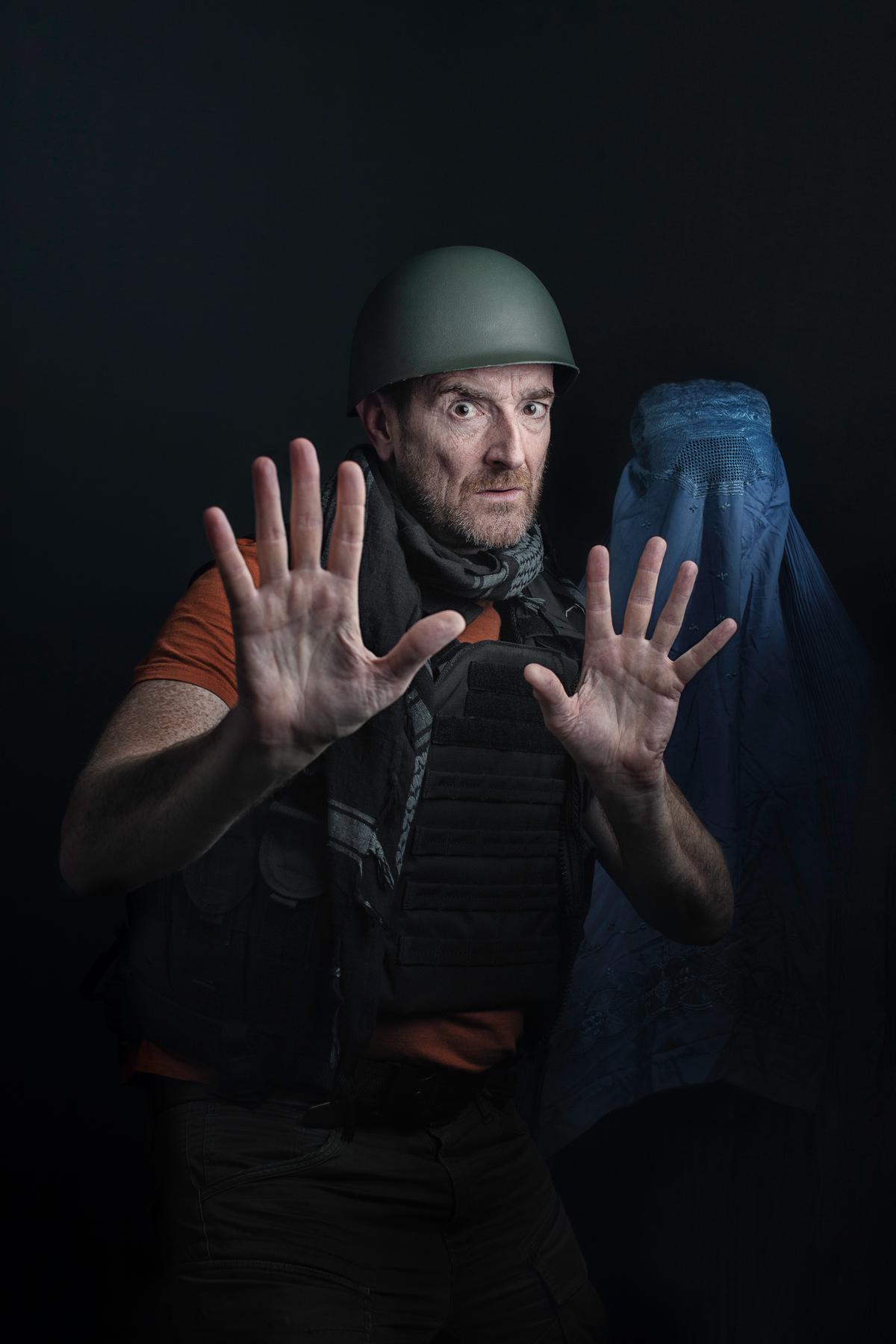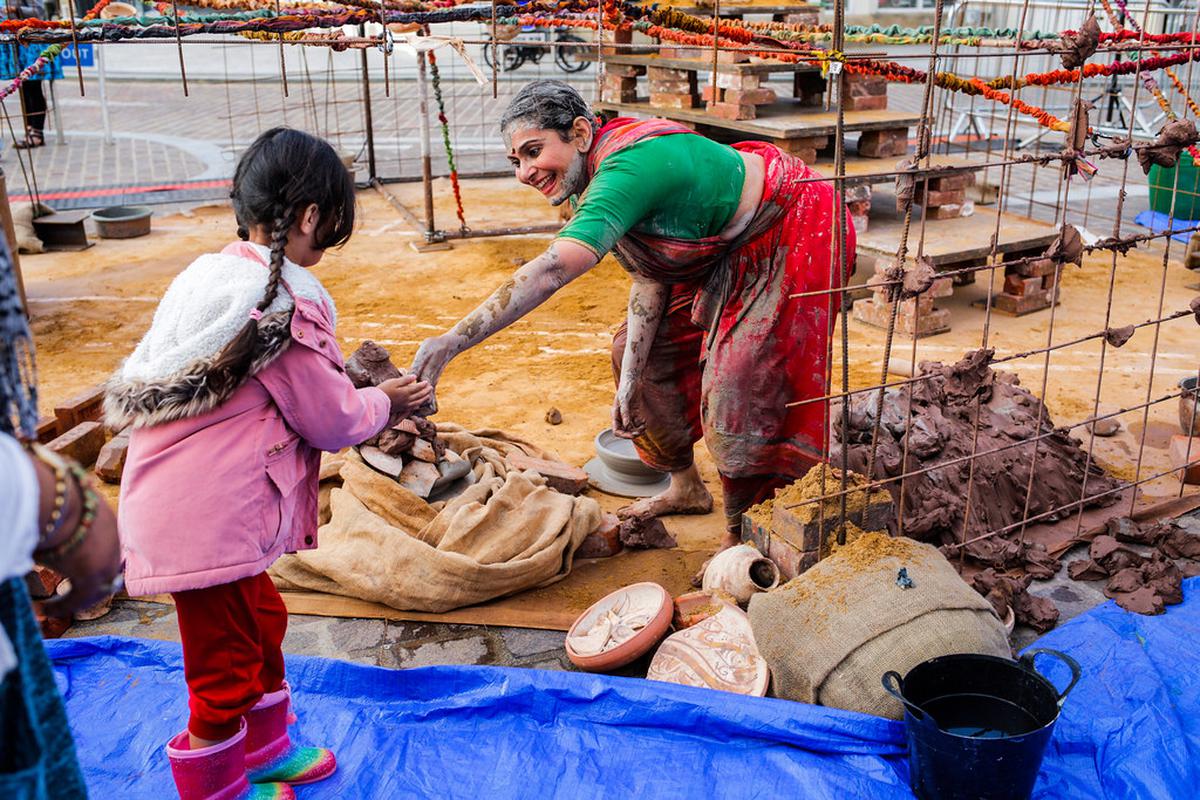Last month, at the debut edition of Art Mumbai — the city’s first art fair — art collector Kiran Nadar, 72, glided into the venue on an electric scooter handpainted by London-based artist Raqib Shaw. Her entry wasn’t just an art statement but a segue into the art world’s growing commitment to accessibility.
An increasing number of festivals today are going the extra mile to add a layer of inclusivity and make them accessible for a wider audience with varied needs. “The Serendipity Art Festival [SAF] is one of the first festivals in India that considered disability, access and inclusion since inception, rather than retrofitting it later,” says Siddhant Shah, an architect-turned-access consultant, who founded Access For All in 2015, which has collaborated with art events ranging from the four-month-long Kochi-Muziris Biennale to Delhi’s India Art Fair, and most recently Art Mumbai.
Art for all
In 2016, when SAF debuted in Goa, it was the first art festival to come out with a Braille guide and tactile maps so the visually impaired could read, understand and access the same information as other visitors. Over the years, artists on its lineup have featured visually impaired Swiss artist Michael Fehr, Scottish paraplegic dancer Joel Brown, and Indian writer and disability campaigner, Salil Chaturvedi.
Visually impaired visitors read exhibit descriptions in Braille
For six years, Shah has also been curating Senses, India’s first arts programme curated for people with special needs. This year, the “relaxed” lineup includes storytelling sessions for neurodiverse children, motor skill building workshops, art therapy, sensory painting experience, terracotta making and even a blindfold photography workshop. “It is important to create such spaces that are easy to navigate for neurodiverse people but also accommodate and bring their families and caregivers together,” says Renuka Figueiredo, psychologist, special educator and director of The Owl House, a school for neurodiverse students in Goa’s Aldona area, whose students have attended SAF in the past.
Like the West, where cultural festivals offer a low sensory hour during the day for people with sensory difficulties, SAF has carved out a special hour (10 a.m.-11 a.m.) where people with special needs as well as those who would like to avoid crowds can register and enjoy the showcase. This year, a sensory bag as well as a calming break room for those affected by shows that rely on sounds, lights and visuals, are available. These small changes reveal the festival’s unwavering support in shaping a more aware art world.
“The reason I don’t attend art festivals is that [most of them] claim to be accessible, but more often overlook basic details such as having a ramp in places with a few steps and elevation ”Anubha VaidThe Delhi-based higher education consultant became wheelchair-bound after a car accident
Closing the gap
By curating a festival where people from marginalised communities are not made to feel as an afterthought, SAF has garnered a reputation for its amorphous ways of fostering a community of artists and visitors with disabilities to gather, work and converse. “Every child with a special need is different,” says Sharmila Banerji, whose daughter Shreya, a student at Figueredo’s school, is on the autism spectrum. “We have been attending SAF for three years now, and my daughter loves looking at the abstract art. She’s also the last to leave the music concert, even though she has sound sensitivity.”
The festival’s evolution into a truly democratic space — as its 2023 tagline ‘Come Together’ suggests — depends on this. In year one, only 25 developmentally and intellectually challenged visitors made it to this multi-genre art showcase in Panjim, but recent statistics assure that the festival’s growth has also seen an uptick in its diverse demographic. Last year, at least 50 differently abled visitors attended the festival every day.
At Senses, an arts programme curated for people with special needs
Unlike the India Art Fair, SAF — which has 13 unusual venues, including a multilevel parking and a daily concert on a ferry — may not be 100% wheelchair friendly yet, but it is closing the gap. This year has seen the introduction of new ramps and elevators to aid those with mobility issues across Panjim’s promenades and parks. “Every year we look at accessibility in different ways and take it a step further,” says festival director Smriti Rajgarhia.
Adding to their army of 300 volunteers, who are trained and sensitised on accessibility needs, 2023 will also introduce art tours with Indian sign language experts for the hearing impaired (available for free), and a comprehensive Accessibility Guide to help people with special needs navigate the festival. It will detail things like which exhibitions come with Braille interpretations (Crafted Expressions, a show on Indian performing arts is available through Braille), and which shows are wheelchair friendly (River Raag, classical music concerts on the Mandovi river, has access).
6 to catch in Panjim
Afghanistan Is Not Funny: The true story of a British comedian and photographer in war-torn Afghanistan (Braille, ramp access)
Epicentre: Vikram Iyengar’s performance art at an eerie parking lot (lift access)
Jump: A play about the human psyche plays out on a multi-level parking terrace
The Village: A culinary showcase by women from SAG groups, curated by chef Thomas Zacharias (wheelchair and ramp access)
ASMR: A sensory theatrical performance featuring an exploration through autonomous sensory meridian response (Braille, wheelchair access)
Pixel: An avant-garde stagecraft that merges hip-hop dance with cutting-edge digital projection.

Henry Naylor in Afghanistan is Not Funny
| Photo Credit:
Rosalind Furlong
Hiya Anupam’s ASMR
From the margins
What makes SAF’s ethos of inclusiveness go beyond disabilities is how it is also becoming a springboard of social inclusion — accessible to people from different socio-economic backgrounds, as well as those from under-represented and marginalised minorities.
Among the 128 multilingual projects put together by 10 curators this year are free-to-attend projects and performances across six disciplines: a folk music showcase from Madhya Pradesh, a dance performance inspired by a trio of stories that celebrate feminist uprisings in Manipur, a recital of works by Dalit poet K.B. Siddaiah, a children’s play about ADHD, a marine life sustainability art project that brings scientists and artists together as well as other theatrical showcases from Tamil Nadu, Karnataka, Kerala and beyond.

Vidya Thirunarayan’s Lives of Clay
| Photo Credit:
Stuart Boulton
Little may have changed in Panjim since the festival’s last outing in 2022 — the Smart City is still a forlorn dream, its roads still a freshly-dug debris of chaos — but what has emerged clear through the art-filled pavements and promenades across the Mandovi riverfront is a display and reflection of the diverse and inclusive society we all hope to inhabit.
Serendipity Arts Festival will take place in Panjim from December 15 – 23.
The culture and lifestyle writer is based in Goa.